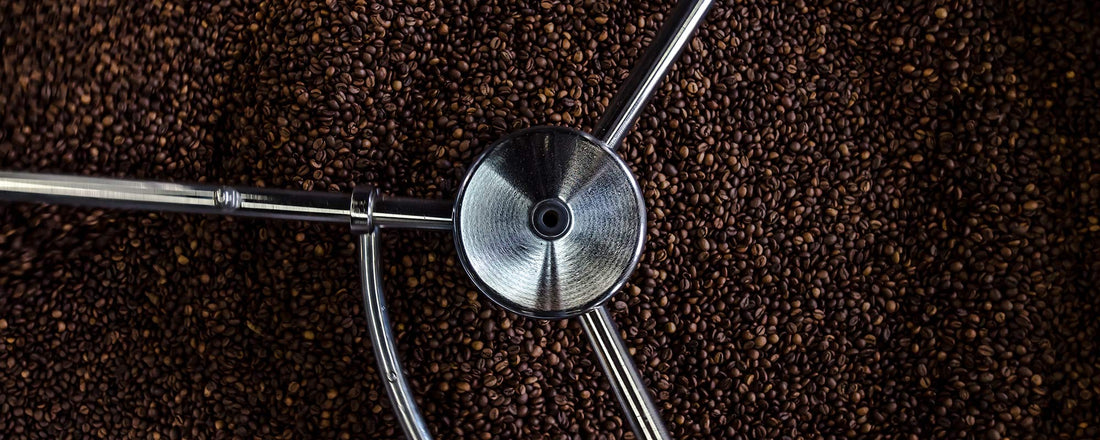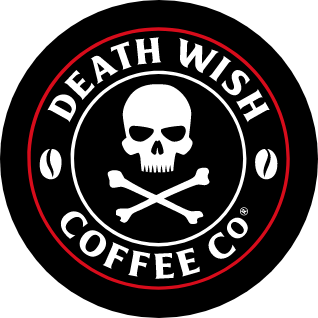
Here’s the Truth About Roast Shades
Coffee TalkWhat's the Difference Between Roast Shades?
There’s always going to be that one know-it-all that has a knack for throwing shade all over your java parade. Whether it be the barista at the corner café, the person sitting next to you on the subway, silently judging your Venti soy latte or your close bud who happens to be a coffee connoisseur, it’s time to level up on your own coffee game.
Do you prefer a dark roast? Light roast? Medium roast? Do you even know what that means to the flavor in your cup? Let’s get you up to date.
The degree to which coffee beans are roasted is one of the most important factors in determining the taste of the coffee in your cup. The coffee roasting process transforms raw beans into the aromatic, flavorful beans we know as coffee. Ultimately, we end up with a few common roast shades.
How to Differentiate Roast Shades

Light Roast
Light roast coffees are known for being lighter in color, body and oil. Light roasts are removed from the roaster upon "first crack"—which is a popping sound that serves as a cue that the beans have reached their designated roast shade. While light roasts are commonly mistaken for having less caffeine, they actually retain more caffeine from the original coffee bean since they are roasted for a shorter amount of time and at a lower temperature.
Light Roast Characteristics:
- Light brown in color, with a light body
- No oil on the bean surface
- Toasted grain taste and pronounced acidity
- Light roasts retain most of the caffeine from the bean
Common Light Roast Names: Light City, Half City, Cinnamon Roast, and New England Roast
Medium Roast
Medium roast coffees have a thicker body than a light roast and are darker in color. A medium roast is roasted for longer and at a higher temperature than a light roast. They take on a bit of the flavor from the roasting process and are roasted up until the second crack. Medium roasts are known for their balanced, never-bitter flavor.

Medium Roast Characteristics:
- Medium brown in color with more body than light roasts
- No oil on the bean surface
- More balanced flavor, aroma and acidity
- Caffeine is somewhat decreased but more than in darker roasts
Common Medium Roast Names: Regular Roast, American Roast, City Roast, Breakfast Roast
Our Medium Roast: Our blend is a shade or two lighter than our original blend and contains our cult-classic level of caffeine—making it perfect to add variety to your daily coffee routine, without sacrificing strength.
Medium-Dark Roast
Medium-dark roast coffees are roasted several minutes longer than a medium roast. They are roasted until the pop of the second crack, which signifies the full development of the coffee. The acidity is lower than a light or medium roast and usually has a heavy body.
Medium-Dark Roast Characteristics:
- Richer, darker color with a heavy body compared to light and medium roasts
- Some oil beginning to develop on the surface of the beans
Common Medium-Dark Roast Names: Full-City Roast, After Dinner Roast, and Vienna Roast
Our Medium-Dark Roast: Valhalla Java is a medium-dark three roast blend, originating in the volcanic soils of Indonesia and nutrient-rich soils of Central and South America.
Dark Roast
Dark roast coffees are dark brown to black in color. Dark roast coffees have a full, robust flavor and are characterized by drawn-out oil that glosses the surface when the coffee is brewed. Dark roasts are roasted at a higher temperature and are ready at the end of the second crack.

Dark Roast Characteristics:
- Dark brown in color, similar to chocolate, sometimes almost black
- Has a sheen of oil on the bean surface, typically showing in the cup after the coffee is brewed
- Generally, dark roasts have a bitter and smoky or even burnt taste
- Best roast to use for espresso
- The amount of caffeine is significantly decreased
Common Dark Roast Names: French Roast, Italian Roast, Espresso Roast, Continental Roast, New Orleans Roast, and Spanish Roast
Our Dark Roast: At Death Wish Coffee, we got our claim to fame with our original Dark Roast Coffee by using the strongest combination of beans and the perfect roasting process. The result? Double the strength of your average cup.
Since 2012, we continue to source only the highest-quality robusta and arabica beans, AND they are always USDA Organic and Fair Trade Certified.
[Featured Image Credit: Vladimir Proskurovskiy via Unsplash]
RELATED: How to Best Store Your Coffee
